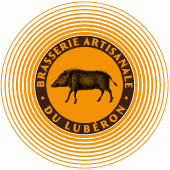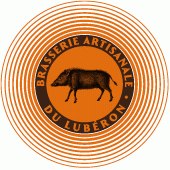WINE AGENCY

B.A.L.
Craft Beer from the Luberon
Produced in an artisanal way at the bottom of the Luberon mountains, the BAL is a certified organic high fermentation beer, unfiltered and unpasteurized. All of our beers are triple fermentation with a third bottle fermentation.
Brewed by hand in small lots in accordance with ancestral brewing rules but enriched by our own wine making expertise, our beers are exclusively top fermentation: their production requires pristine water, organic malts, several types of hops and organic spices.
The third bottle fermentation is a natural process that is very similar to a méthode champenoise, and that results in a very dense lather with delicate and persistent bubbles. The presence of lees in the bottle brings complexity and structure to the beer.


The BAL is a certified organic brewery that aims to work in a truly responsible way towards the environment and with minimum impact.
We commit ourselves to producing handmade craft beers of the highest quality in small lots, using only the best ingredients and following the strictest standards. The BAL indeed works under long term sourcing contracts with local grain growers in order to minimize its carbon footprint while promoting the local terroir.
Lather: rich and compact lather. Bubbles are delicate and persistent
Color: golden hue with a slight haze
Aromas: rich malty, apricot and peach aromas, with hints of clove
Taste: smooth with a a long finish
Service: to be enjoyed at around 5°C
Food pairing: charcuterie, red meats and strong hard paste cheeses
Alcohol content: 6.5%
Malts blended: 64% pale barley malt / 32% Pilsner barley malt /4% pale wheat malt
Hops blended: flavoring hops (Strisselspalt) & bittering hops (Magnum)
Dosage upon bottling: 9 g/l of cane sugar
On lees ageing: minimum of 6 to 8 weeks
Lather: medium and compact lather. Bubbles are delicate and persistent
Color: A light opalescent yellow
Aromas: fresh fruit and floral aromas together with hints of coriander
Taste: low bitterness, crisp with a long finish
Service: to be enjoyed at around 3° to 4°C
Food pairing: fish and seafood, white meats, goat cheeses…
Alcohol content: 5.5%
Malts blended: 69% pale barley malt / 19% pale wheat malt / 11% raw aka einkorn
Hops blended: flavoring hops (Strisselspalt) & bittering hops (Magnum)
Dosage upon bottling: 9 g/l of cane sugar
On lees ageing: minimum of 6 to 8 weeks


Lather: dense and ivory colored, rich but not overwhelming. Bubbles are delicate and persistent
Color: old armagnac amber, brillant haze
Aromas: rich and complex, biscuity and malty aromas with hints of caramel and gingerbread
Taste: Full bodied with a harmonious bitterness
Service: to be enjoyed at around 8°C
Food pairing: charcuterie, red meats and game, strong hard paste cheeses
Alcohol content: 7%
Malts blended: 58% pale barley malt / 29% Pilsner barley malt / 7% coffee barley malt / 3% chocolate barley malt / 3% pale wheat malt
Hops blended: flavoring hops (Strisselspalt) & bittering hops (Magnum)
Dosage upon bottling: 9 g/l of cane sugar
On lees ageing: minimum of 6 to 8 weeks

CHOOSING, BLENDING AND MILLING THE MALTS
Beer is made using malted grains (barley, wheat, spelt…). Our malts are carefully selected amongst hundreds of varieties according to their organoleptic, fermentation and color specifications in order to produce a blend that is unique to each beer.
Once blended, the different malts are then milled into grist in order to release the nutriments (starch, enzymes) needed for the brewing process.

MASHING & BOILING
The malt is milled and the malt grist is mixed with warm water to produce the mash. It in the mash that malt and other cereal starches are transformed into sugars and proteins, and that other materials are made soluble, creating the sweet fermentable liquid called the wort.
The temperature of the mash is then gradually elevated in order to convert starch and proteins into fermentable (that will be transformed into alcohol and gas) / non-fermentable (that will give beers its body and structure) sugars and amino acids that are assimilable by yeast.
We heat our mash tun using a mix of decoction and infusion: the mash is first mixed with water at a temperature of 45 / 50°C, and is then gradually held at different temperature stands before reaching 75°C. The mash is continually churned by hand to ensure good mixing.
Because the mash contains solid malt residues, a basic filtration is necessary in order to separate them from the wort. The filtration is gravity fed, using the husk material as a filter aid. The wort is then transferred into the boiling vat.
BOILING AND ADDING THE HOPS
The wort is then boiled for a period of 90 minutes to 2 hours in order to inactivate the residual enzymes from the mash, sterilize and stabilize it.
It is during the boil that hops are added to the wort, in order to add bitterness and flavors. Spices are also added. The subsequent clear and bitter wort is then cooled from 95°C to 20°C before being sent to a fermentation tank.
TANK FERMENTATION
The BAL is a top fermenting beer.
The first fermentation last about 5 days and takes place at about 20°C, followed by a second “cold” fermentation at about 4°c for 15 to 21 days. The yeast’ work is slowed down and then stopped by the cooler temperature, causing the yeast to fall to the bottom of the vat, thus naturally clarifying and decanting the beer.
We cellar our bottles lying down in the Champagne fashion, in order to maximize contact potential between the beer and the yeasts.

THIRD BOTTLE FERMENTATION
Once the second « cold » fermentation is over, the beer is bottled without any filtration or pasteurization. Liquor made out of beer and sugar is added during bottling in order to create sufficient carbonation, as the added sugar is transformed by the remaining yeasts whose action is re ignited by the storage in a cellar at 22°C for two to three weeks.
The young beer is then cellared for a minimum of one month at the brewery in order to develop sufficient organoleptic complexity. It is also during this phase that the beer is clarified in a totally natural way, as the inactive yeasts converge to the bottom of the bottle.
This third bottle fermentation is a totally natural process that produces a dense lather with a delicate and persistent bubble, and can be compared to a méthode champenoise. The presence of lees in the bottle brings added structure and complexity.
This maturation process continues over time, allowing the beer to develop a wide range of secondary aromas, of those usually associated with champagne.





